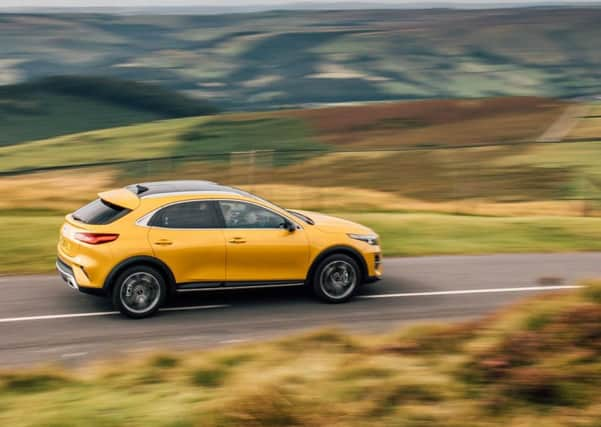Review: Kia Xceed


Ahead of both, with sales comfortable over 100,000, in numerical ascendancy, are Audi, Vauxhall, BMW, Mercedes-Benz, Volkswagen and, breaching the 200,000 mark, Ford.
The “industry” laments an overall drop in sales but the above marques are winning and we still bought more than two million shiny new motors between 31 December and 1 November. An increasing percentage have electric power, so too in the used car market, which has passed six million this year.
Advertisement
Hide AdAdvertisement
Hide AdKia is one of the dozens of car companies where the increase of annual sales is seen as success. To do this, they need to expand. Take the manipulation of its popular Ceed range of family cars. This gives us the eminently practical five-door Ceed hatchback and estate, the less practical but elegant ProCeed and now the Xceed.
Xceed’s purpose, in Kia’s words, is to be a sporty alternative to a larger traditional SUV with comparable interior space but in a more compact body. Harrumph and humbug? It is taller and longer than a Ceed, lower than a Sportage. Call it a variation on a hatchback with a higher ride height (44mm) helped by burly 60-section tyres and some scuff rolling cladding around the arches and along the flanks. It is akin to the Focus Active. On my reading of the price list, it costs a couple of thousand pounds more than the Ceed but it is still not an expensive car. It could tempt.
If so, you will have bought a CUV, which spells urban crossover utility vehicle in the Kia lexicon. I make it a UCUV then.
Anyway, go and kick the tyres in the showroom and admire its admittedly cute styling and new interpretation of the Kia grille’s “tiger” grin. It gives the stark edges a second lip. At the back the tail section has its attractions and I caught hints of Porsche’s Macan, a household superstar in wealthy locales. (Porsche sales rose by almost six per cent this year to 11,618 so that part of the economy is in good fettle.)
Having enjoyed a week with an Xceed I am at a loss to support its supposed roominess. That said, it was big enough. What let my car down was an extraordinary perceived level of noise from the tyres, fat 205/60 Michelins on 16-inch alloys.
I made allowance for the comparative quiet from the cars I’d used in the previous weeks, an Astra and a Berlingo van car no less. Then I drove the subsequent test car, Jeep’s Wrangler, a hefty 4x4 capable of going anywhere. Its massive Bridgestone Dueller tyres seemed quieter in the cabin.
Help is at hand. Kia will surely benefit from the world-first claim by its partner Hyundai for a road noise active noise control system. RNANCS? Nope, Hyundai mercifully shortens it to RANC. Existing systems reduce constant sounds inside the car by emitting sound waves which counteract the noises we hear. RANC has a wider repertoire. It calculates the vibration from the road to the car and analyses road noise through a microphone. It takes a mere 0.002 second to analyse the noises and produces an inverted sound wave which masks the intrusions. It monitors each seat and can reduce noise by three decibels.
The first vehicle to benefit will be Hyundai’s top-end Genesis limousine, which is not sold in Europe.
Advertisement
Hide AdAdvertisement
Hide AdThe best thing about the Xceed is the body design. It looks good from any angle. It has presence, attitude, an upmarket style. The petrol engine choice is a triple-cylinder 1-litre GDi-T (gasoline direct injection turbo) with 118bhp or a 1.4 four-cylinder GDi-T petrol with 138bhp and much more torque. The high torque 1.6-litre turbo diesel is offered with 114 and 134bhp.
Prices start at £20,795 for the one-litre model in grade-2 trim, which brings cruise control and a speed limiter, air conditioning, 16-inch alloys and a slim spare, roof rails and heated door mirrors.
Apart from my whining about its tyre and chassis noise, I liked my test car – the cheapest in the catalogue – the 1.0 T-GDi 2. The engine is a sweet-revving gem, smoothly into the red zone, which gives 60mph in second gear.
Full marks for a reversing camera with guide lines but I missed a speed limit display and the speedometer markings would be better in a 30-50-70 sequence rather than 20-40-60. Navigation is off your smart phone which is usually more up to date than the installed systems. The fittings are attractive at this price level. Lane guidance assistance is keen (you can switch off) and there’s a similar eagerness in the brakes and steering. Nice too have a real handbrake.
Verdict: Mostly, another winner from Kia.